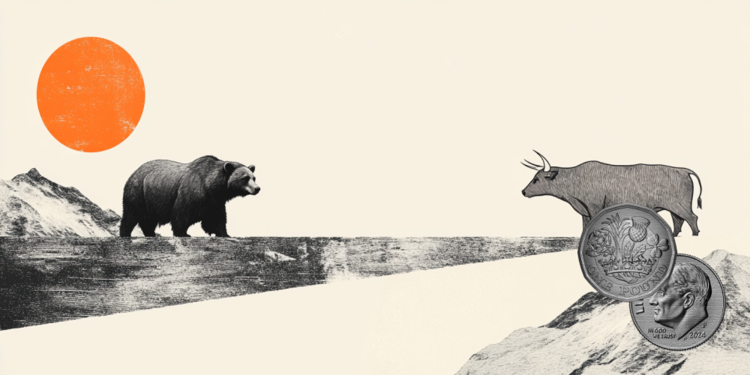Imagine traveling great distances across a barren desert with no access to food or water. This is the challenging reality that many insects flyers face in UK .
The country’s insect populations are in drastic decline.
The results of a recent survey carried out by the conservation group Buglife and Kent Wildlife Trust found that the number of flying insects in the UK has dropped by almost 60% in the last 17 years.
Approximately 20 species of bees and wasps have gone extinct in the last 100 years, and half of the UK’s butterfly species are now endangered, according to the charity Butterfly Conservation.
Globally, up to 10% of all insect species are threatened with extinction.
The devastation is linked to a number of factors, including climate change and pesticide use, while large swaths of key habitats for the class have been lost to intensive agriculture and other developments, explains Jamie Robins, program manager at Buglife.
Since 1930, the UK has lost 97% of its wildflower meadows. This affects not only pollinating insects, but also insect-eating animals such as birds, hedgehogs and bats.
“While our field looks green, beautiful and vibrant, if there aren’t many flowers, it’s a pretty hostile environment for our insects to move around easily,” says Kate Jones, Conservation Officer at Buglife.
B-lines
Buglife has identified 150,000 hectares of land across the UK that it intends to restore to wildflower meadows. The hope is that these spaces can be connected to form a national network of “stepping stones” – an English term used to designate points that facilitate the connection between habitats – of insects, called B-lines, which will provide stops rich in nectar for the pollinators.
These floral “points” should not be more than 300 meters apart, “based on the average travel distance of a lone bee.” The range is enough to “ensure they can move from one location to another,” explains Robins.
The B-lines project, funded in part by the National Lottery Heritage Fund and the Green Recovery Challenge Fund, was born in 2011. Using software developed by the University of Washington, Buglife has mapped the best connections between existing wildflower sites in the UK. and created the first national B-lines map, released in March 2021.
So far, B-lines has restored just over 2,500 hectares of grassland rich in wildflowers. It’s just a small percentage of the predicted 150,000 hectares, and restoring wildflowers can be difficult.
Claire Carvell, senior ecologist at the UK’s Center for Ecology and Hydrology, says that native wildflowers tend to struggle to establish themselves in areas of rich, fertile farmland, and pollinators often need a diverse range of flowers across all regions. seasons.
Another important challenge is that the network runs through public and private land in both urban and rural areas. Therefore, the project enlisted the help of local authorities, farmers and landowners.
Buglife is providing volunteers with guidance on growing wildflower-rich pastures, along with a 10-year maintenance plan.
“They are the ones who can really make a difference. They can give away small areas of their land to wildflowers and restore the habitat they have,” says Robins.
Separately, the UK Department for Environment, Food and Rural Affairs is encouraging landowners and farmers to restore habitats by funding wildflower planting and management through the recent ‘Environmental Land Management Scheme’.
Carvell believes that the B-lines initiative is providing effective support and training to farmers, and that advice for the restoration process is an important addition to government-led incentives.
She adds that planting hedges and grasslands rich in wildflowers not only help insects, but farmers as well.
“We have a lot of evidence that farmers are benefiting in positive ways from managing their land for the bees, for the flies, and also for any predatory insects or insects that are providing an almost natural pest control service for their crops.” , describe.
Research published by the UK’s Royal Society shows that creating wildflower habitats on former cropland has no adverse effect on crop yields over a five-year period. On the contrary, it can even increase them.
With nearly 75% of the world’s crops relying on pollination, according to the Food and Agriculture Organization of the United Nations, conserving pollinators through wildflower-rich vegetation is essential for food security.
Audiences can even get involved by creating their own wildflower habitats on the B-lines map via the Buglife website.
Whether it’s a flower-filled garden or a vase of wildflowers by the window, pollinators and insects will be able to enjoy the nectar, says Jones.
“We all have a role to play,” he adds. “Being able to contribute something is wonderful.”
Source: CNN Brasil
I’m James Harper, a highly experienced and accomplished news writer for World Stock Market. I have been writing in the Politics section of the website for over five years, providing readers with up-to-date and insightful information about current events in politics. My work is widely read and respected by many industry professionals as well as laymen.







